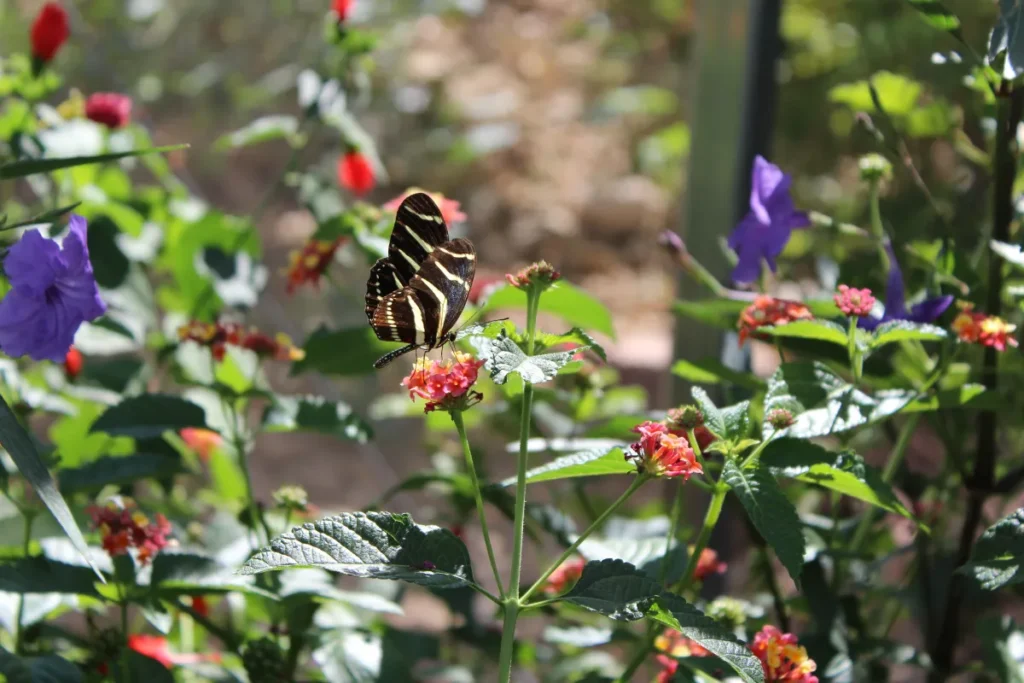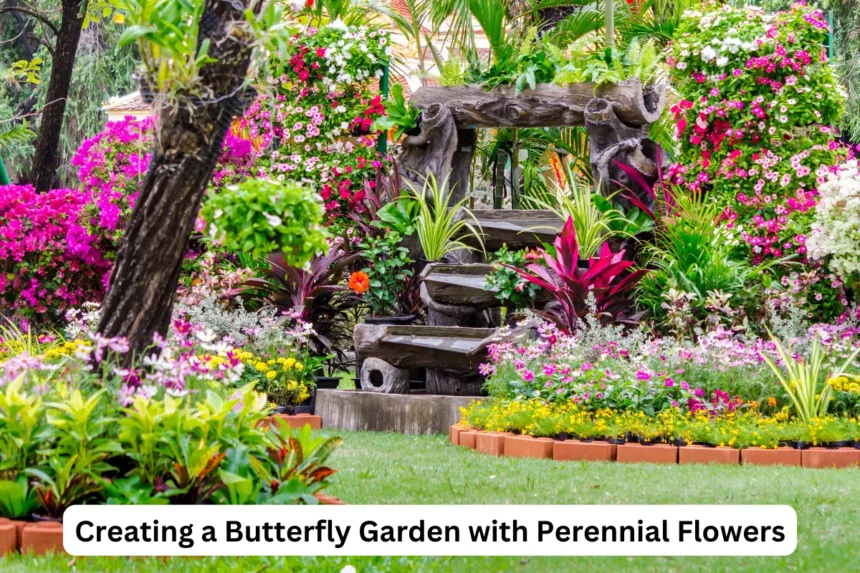Butterfly gardens aren’t just visually appealing; they serve as vital sanctuaries for these fragile creatures crucial to pollination.
By planting perennial flowers chosen specifically to attract butterflies, you can establish a dynamic and sustainable ecosystem right in your own backyard.
Perennial flowers return annually, offering a reliable food source and habitat throughout the butterflies’ life cycles.
Here’s how you can design and cultivate your own butterfly garden using perennial flowers.
Understanding Butterfly Habitats Before selecting plants, it’s essential to grasp butterflies’ basic needs:

Food (Nectar Plants): Adult butterflies feed primarily on nectar from flowers, favoring bright colors like red, yellow, orange, and purple.
Host Plants: Female butterflies lay eggs on specific plants (host plants) where caterpillars feed upon hatching. Each butterfly species prefers particular host plants.
Shelter and Water: Butterflies seek sheltered spots during windy or rainy weather and require shallow puddles or moist areas for drinking.
Choosing Perennial Flowers for Your Butterfly Garden Choosing the right perennial flowers ensures your garden remains attractive to butterflies year-round.
Here are popular choices categorized by their appeal to butterflies:
Spring-Blooming Perennials:
Lavender (Lavandula spp.): Fragrant purple flowers attract butterflies while repelling pests.
Columbine (Aquilegia spp.): Its unique shape and colors are favored by butterflies and hummingbirds alike.
Summer-Blooming Perennials:
Black-eyed Susan (Rudbeckia spp.): Bright yellow flowers with dark centers attract butterflies, bees, and other pollinators.
Purple Coneflower (Echinacea purpurea): Attracts butterflies with nectar and birds with seeds in fall.
Fall-Blooming Perennials:
Aster (Symphyotrichum spp.): Late-season blooms in shades of purple, blue, and white provide essential nectar.
Sedum (Sedum spp.): Drought-tolerant with late-season blooms, vital for butterflies preparing for migration.
Designing Your Butterfly Garden Follow these tips to maximize your garden’s butterfly appeal:
Group Plants by Type: Clustering plants helps butterflies find them easily, enhancing pollination.
Include Different Heights: Create layers with tall, medium, and low-growing plants to attract a variety of butterfly species.
Provide Shelter: Use shrubs, tall grasses, or a butterfly house for wind protection and predator shelter.
Avoid Pesticides: Chemical pesticides harm butterflies and beneficial insects; use natural pest control methods or pest-repelling plants.
Add a Water Source: A shallow dish with sand and water provides butterflies a drinking spot and mineral source.
Maintaining Your Butterfly Garden Ensure your garden flourishes with these steps:
Regular Watering: Deep water during dry spells to maintain plant health.
Deadheading: Remove spent flowers to encourage continuous blooming and nectar production.
Pruning: Trim plants in early spring for healthy growth and to prevent overcrowding.
Mulching: Apply organic mulch to retain moisture and suppress weeds.
Conclusion
Creating a butterfly garden with perennial flowers benefits local ecosystems and enhances your enjoyment of nature.
Carefully selecting plants that support butterflies throughout their life cycles ensures they return year after year.
Whether you have a small balcony or a spacious yard, a butterfly garden with perennial flowers can be
adapted to any space, bringing color, life, and ecological harmony to your outdoor environment.
Start planning your butterfly garden today to experience the enchantment of butterflies among your blooms.

